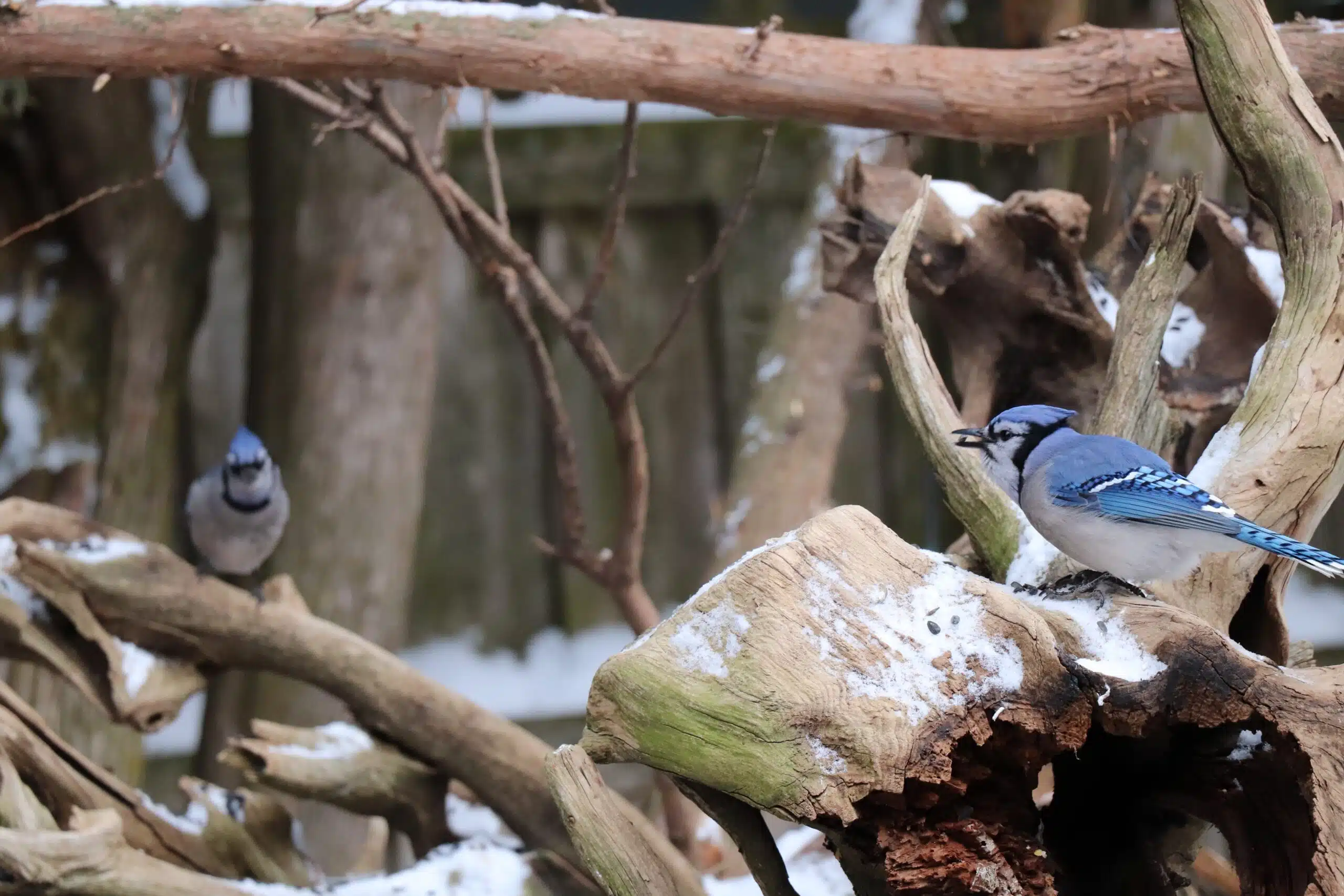Nature Profile
Birds
Blue Jay
Cyanocitta cristata

Voice: Loud harsh “jay, jay, jay.” Calls can also include a sound similar to a squeaky door.
Blue jays are found in all kinds of forests. They are more abundant near forest edges than deep in
the forest, and common in urban and suburban areas, especially where oaks grow or bird nut
feeders are found. They are known for their intelligence and complex social systems including
tight family bonds. Slightly larger than a robin, the blue jays’ distinct blue and white color and
high crest makes them easily recognizable in a yard or forest.
Blue jays mainly feed on nuts such as acorns and are one of the few birds that store food for use
at another time. They can carry up to five acorns in their mouth at once. Two to three acorns can
be carried in their throat and upper esophagus called a “gular pouch.” One can be carried in their
mouth and the other at the tip of their bill. It is estimated a single blue jay can store 3,000-5,000
acorns in one autumn. Beside nuts, blue jays will also glean small invertebrates from trees and
shrubs during the warm months. It is very rare for a blue jay to take and eat eggs and nestlings.
However in late summer, fall and winter blue jays may travel in large aggressive flocks to
frighten other birds away from prime feeding areas. Blue jays frequently scare birds off by
mimicking calls of a red-shoulder or red-tailed hawks. These calls deceive other species into
believing a hawk, a predator, is present.
Blue jay migration is a mystery. For the most part many blue jays are present in the same area
year round. However flocks of blue jays do migrate along the Great Lakes and Atlantic coasts.
Both young and old blue jays have been observed migrating. Some individual blue jays migrate
south one year then stay north the next year, and then migrate south again the following year.
There is no clear study on the variation in individuals which migrate.
One thing is clear blue jays are abundant in the breeding season. The season begins in mid-March
and extends into July. They typically form monogamous pair bonds for life and are not very picky
about nesting locations. A tree or large bush may be used for nesting. Both sexes build the nest
and help rear the young. The nest is built at a height of 10- 40 feet high. The cup-shaped nest is
composed of twigs, small roots, bark strips, moss, other plant material, cloth, paper and feathers,
occasionally with mud added to the cup. The female sits on 4 -5 pale olive eggs over 16 - 18 days.
Young fledge usually between 17 - 21 days after hatching. After the juveniles fledge, the family
travels and forages together until early fall. Blue jays typically have only a singe brood in Ohio
but will nest again if the clutch was lost due to predation.
Blue jays are frequent and abundant in their range. They have adapted well to living around
humans. However the most frequent cause of death for blues jays is cat predation. Millions of
birds are killed annually by cats. Keeping cats indoors or under control when outdoors ensures
breeding success and survival of many bird species, especially rare or endangered species. .
Best Location to View: Bole Woods, Buckeye Bud Bird Feeding Station, Helen Layer Rhododendron Garden, Woodland Trail
Color: Blue
Range: Canada, North America
Size: Small
Wingspan: Medium




